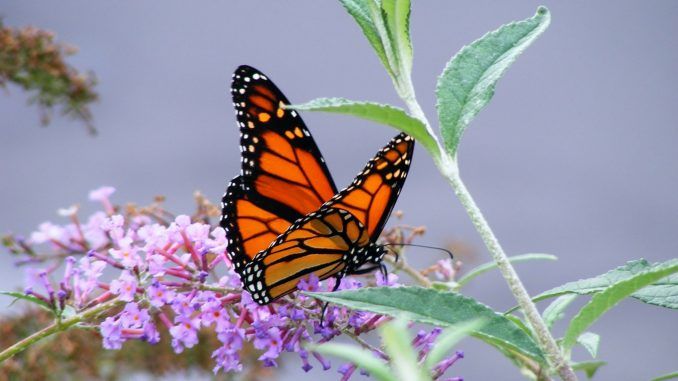
The U.S. Fish and Wildlife Service have announced new steps to save the Monarch butterfly.
The exquisite Monarch butterfly is extremely important for biodiversity, but sadly their numbers have been falling dramatically for 20 years due to changes in farming practices that have affected the availability of their main food source, milkweed.
RT reports: The beautiful monarch butterfly, which is also a major pollinator, is being threatened by herbicides that eradicate milkweed, its primary food source. Now, a desperate rejuvenation program is under way to save the species from possible extinction.

BYPASS THE CENSORS
Sign up to get unfiltered news delivered straight to your inbox.
You can unsubscribe any time. By subscribing you agree to our Terms of Use
A shocking statistic released by the US Fish and Wildlife Service on Monday summed up the plight of the monarch butterfly: Since 1990, about 970 million of the butterflies – 90 percent of the total population – have vanished across the United States.
The massacre provides a grim testimony to the delicate balance that exists between man and nature, and how the introduction of a single consumer product – in this case, Monsanto’s Roundup Ready herbicide – can wreak so much havoc. Sold to farmers and homeowners as an effective method for eliminating milkweed plants, Roundup Ready, introduced in the 1970s, is widely blamed for decimating the monarch butterflies’ only source of food in the Midwest.
“This report is a wake-up call. This iconic species is on the verge of extinction because of Monsanto’s Roundup Ready crop system,” said Andrew Kimbrell, executive director for the Center for Food Safety, which last week released a report describing the effects of herbicide-resistant crops on monarch butterflies in North America.
“To let the monarch butterfly die out in order to allow Monsanto to sell its signature herbicide for a few more years is simply shameful.”
The widespread death of the monarch butterfly has prompted some groups, like the Center for Biological Diversity, to demand the butterfly be placed on the endangered species list.
Dan Ashe, director of Fish and Wildlife Service, preferred to take a diplomatic approach to Monsanto’s hefty contribution to the problem, saying everyone is responsible for the plight of the monarch butterfly.
“We’ve all been responsible. We are the consumers of agricultural products. I eat corn. American farmers are not the enemy. Can they be part of the solution? Yes,” Ashe said.
“It’s not about this wonderful, mystical creature. It’s about us.”
Monsanto responded to the issue in a blog on its website by saying that listing monarch butterflies as a threatened species under the Endangered Species Act “makes for a great news headline,” but ultimately fails to “help solve the problem.”


Be the first to comment